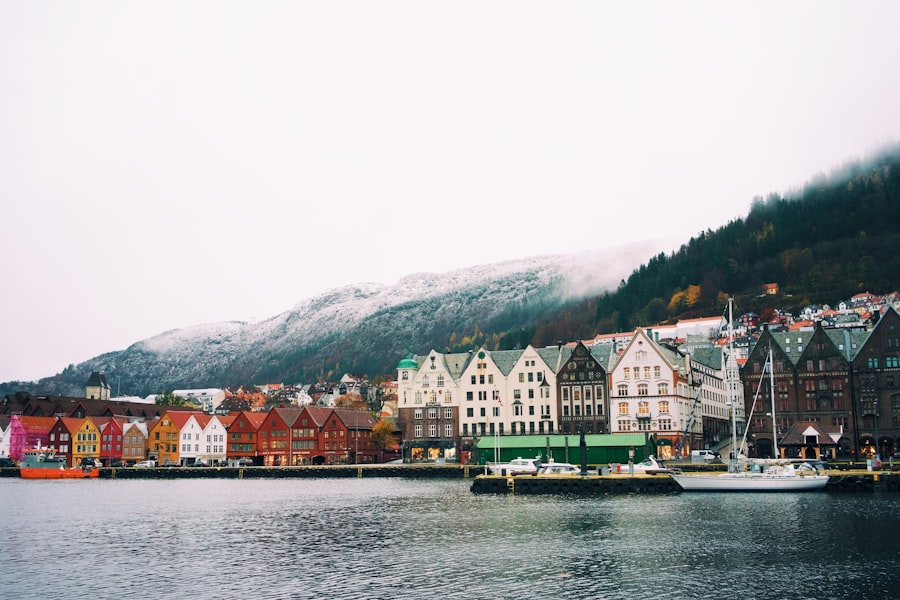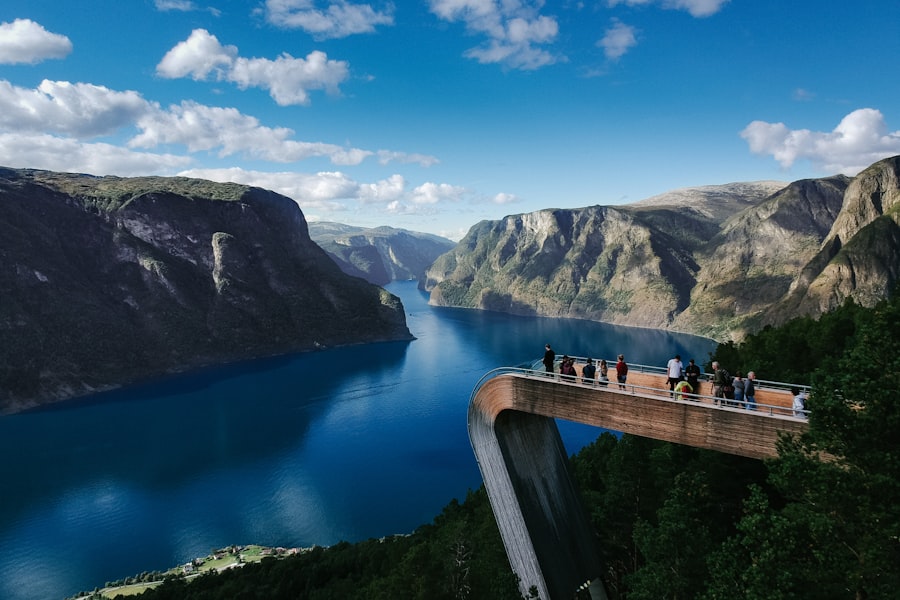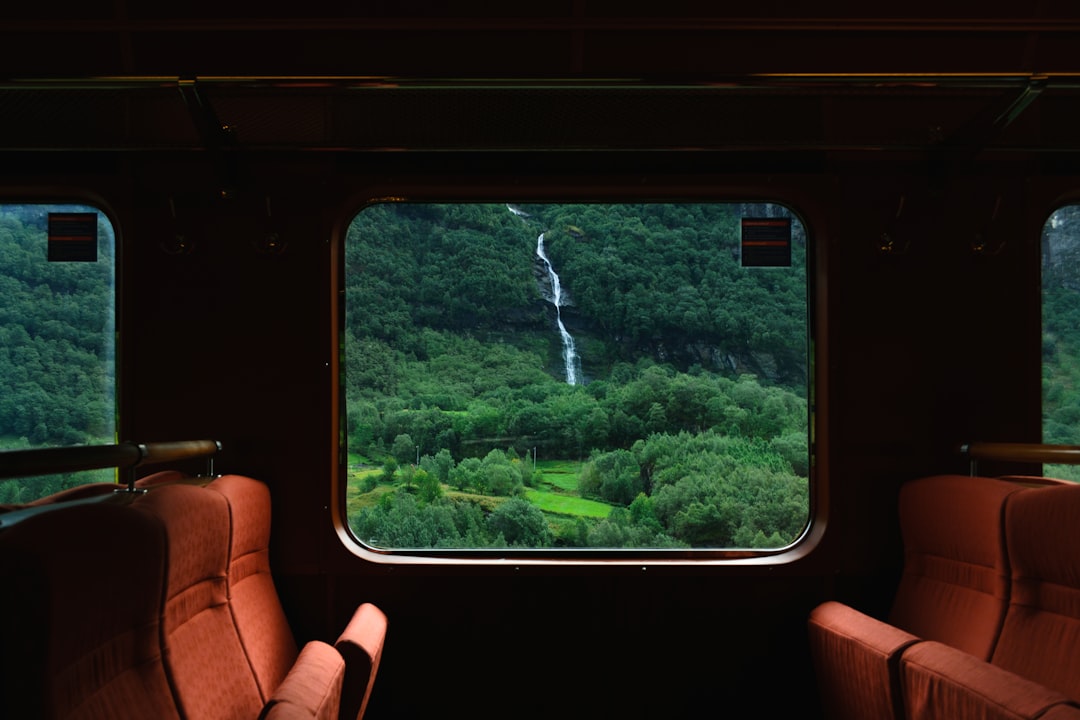Cycling in Norway offers a multitude of benefits that extend beyond mere transportation. Firstly, it is an environmentally friendly mode of travel, significantly reducing carbon footprints compared to driving. In a country renowned for its stunning natural landscapes, cycling allows individuals to immerse themselves in the breathtaking scenery while contributing to the preservation of the environment.
The fresh air and the invigorating exercise associated with cycling also promote physical health, making it an excellent choice for those looking to maintain an active lifestyle. Regular cycling can improve cardiovascular fitness, strengthen muscles, and enhance overall well-being. Moreover, cycling in Norway fosters a sense of community and connection with fellow cyclists.
The shared experience of navigating the picturesque routes creates opportunities for social interaction and camaraderie among riders. This is particularly beneficial for newcomers to the country, as it provides a platform for meeting locals and forming friendships. Additionally, cycling can be a cost-effective means of transport, saving money on fuel and parking fees while allowing individuals to explore their surroundings at their own pace.
The combination of health benefits, environmental consciousness, and social opportunities makes cycling an appealing choice for both residents and visitors in Norway. Book your 1-hour strategy session with Norway Relocation Group.
Summary
- Cycling in Norway promotes physical and mental well-being, reduces carbon footprint, and allows for a closer connection with nature.
- Norwegians view cycling as a way of life, with a strong emphasis on sustainability, health, and community.
- Norway’s cycling infrastructure includes well-maintained bike paths, designated lanes, and bike-friendly public transportation options.
- Essential gear for cycling in Norway includes high-visibility clothing, waterproof gear, and reliable lights for dark winter months.
- When cycling in Norway’s varied terrain, it’s important to be prepared for steep hills, unpredictable weather, and diverse road conditions.
Understanding the Cycling Culture in Norway
Norway boasts a rich cycling culture that is deeply ingrained in its society. Cycling is not merely a recreational activity; it is a way of life for many Norwegians. The country’s commitment to sustainability and outdoor activities has led to a significant increase in the number of cyclists on the roads and trails.
From urban centres to rural landscapes, cycling is embraced as a practical and enjoyable means of transport. This cultural acceptance is reflected in the growing number of cycling events, clubs, and community initiatives that promote cycling as a viable lifestyle choice. The Norwegian cycling culture also places a strong emphasis on safety and respect for all road users.
Cyclists are generally well-regarded by motorists, and there is a mutual understanding that everyone shares the road. This respect extends to infrastructure development, where cities are increasingly investing in dedicated bike lanes and paths to ensure safe passage for cyclists. Furthermore, cycling is often integrated into daily life, with many people opting to cycle to work or school.
This cultural norm not only promotes physical activity but also encourages a healthier lifestyle among the population.
Navigating Norway’s Cycling Infrastructure

Norway’s cycling infrastructure has evolved significantly over the years, making it easier for cyclists to navigate both urban and rural areas. Major cities like Oslo, Bergen, and Trondheim have developed extensive networks of bike lanes and paths that prioritise cyclist safety. These dedicated routes often separate cyclists from vehicular traffic, reducing the risk of accidents and creating a more pleasant riding experience.
Additionally, many cities have implemented bike-sharing schemes that allow residents and tourists alike to access bicycles conveniently. In rural areas, Norway’s natural landscapes provide ample opportunities for off-road cycling adventures. The country is home to numerous trails that wind through forests, mountains, and along fjords, offering cyclists a chance to experience the stunning beauty of the Norwegian countryside.
While these trails may not always be as well-marked as urban routes, they often lead to breathtaking vistas and hidden gems that are well worth the effort. Overall, Norway’s commitment to enhancing its cycling infrastructure reflects a growing recognition of the importance of cycling as a sustainable mode of transport.
Essential Gear for Cycling in Norway
When cycling in Norway, having the right gear is essential for both comfort and safety. Given the country’s varied climate, cyclists should invest in high-quality clothing that can withstand changing weather conditions. Waterproof jackets, thermal layers, and breathable fabrics are crucial for staying dry and comfortable during rides.
Additionally, padded shorts can enhance comfort on longer journeys, while gloves can provide better grip and warmth during colder months. Safety gear is equally important when cycling in Norway. A well-fitted helmet is a must-have for all cyclists, as it significantly reduces the risk of head injuries in case of accidents.
Reflective clothing and lights are also essential for visibility, especially during the darker months when daylight hours are limited. Cyclists should also consider carrying basic repair tools and a first-aid kit to address any minor issues that may arise during their rides. By equipping themselves with the right gear, cyclists can ensure a safer and more enjoyable experience on Norway’s roads and trails.
Tips for Cycling in Norway’s Varied Terrain
Norway’s diverse terrain presents both challenges and rewards for cyclists. From steep mountain passes to flat coastal roads, each region offers unique experiences that require different skills and strategies. When tackling hilly areas, cyclists should focus on maintaining a steady cadence rather than pushing too hard on steep inclines.
This approach helps conserve energy and makes it easier to navigate challenging climbs. In contrast, flat coastal routes often provide opportunities for faster speeds and longer distances. Cyclists should take advantage of these stretches by planning longer rides that allow them to explore picturesque coastal towns and scenic viewpoints along the way.
Additionally, it’s important to be mindful of changing weather conditions, particularly in mountainous regions where temperatures can drop suddenly or rain can appear unexpectedly. Being prepared with appropriate clothing and gear will enhance the overall cycling experience while ensuring safety on varied terrain.
Cycling Laws and Safety in Norway

Understanding cycling laws in Norway is crucial for ensuring safety on the roads. Cyclists are required to adhere to traffic regulations similar to those governing motor vehicles. This includes obeying traffic signals, yielding to pedestrians at crossings, and using hand signals when turning or stopping.
It is also mandatory for cyclists to wear helmets when riding on public roads, particularly for those under 16 years of age. In addition to legal requirements, safety practices play a vital role in promoting responsible cycling behaviour. Cyclists should remain vigilant at all times, especially in urban areas where traffic can be heavy.
Maintaining a safe distance from vehicles and being aware of blind spots can help prevent accidents. Furthermore, using lights during low visibility conditions is essential not only for personal safety but also for increasing visibility to other road users. By following these laws and safety guidelines, cyclists can contribute to a safer environment for everyone on the road.
Embracing the Norwegian Cycling Season
The cycling season in Norway varies significantly depending on geographical location and climate conditions. Generally speaking, the warmer months from late spring through early autumn are considered peak cycling season. During this time, cyclists can enjoy longer daylight hours and milder weather, making it ideal for both leisurely rides and more challenging excursions.
However, embracing the Norwegian cycling season also means being prepared for its unpredictability. Even during summer months, sudden rain showers or cooler temperatures can occur, particularly in coastal areas or mountainous regions. Cyclists should be adaptable and ready to adjust their plans accordingly.
Many local cycling clubs organise events throughout the season, providing opportunities for riders to connect with others who share their passion for cycling while exploring new routes together.
Exploring Norway’s Scenic Cycling Routes
Norway is renowned for its breathtaking landscapes, making it a paradise for cyclists seeking scenic routes. One of the most famous cycling paths is the Rallarvegen route, which takes riders through stunning mountain scenery from Haugastøl to Flåm. This historic path offers views of waterfalls, glaciers, and picturesque valleys that showcase Norway’s natural beauty.
Another remarkable route is the Atlantic Road (Atlanterhavsveien), which features a series of bridges connecting small islands along the coast. This route provides cyclists with panoramic views of the ocean and surrounding landscapes while allowing them to experience the unique charm of Norway’s coastal communities. For those seeking a more challenging adventure, the Lofoten Islands offer rugged terrain combined with dramatic scenery that leaves an indelible impression on all who ride there.
Exploring these scenic routes not only enhances one’s cycling experience but also deepens appreciation for Norway’s stunning natural environment.
Joining the Cycling Community in Norway
Becoming part of the cycling community in Norway can greatly enrich one’s experience as a cyclist. Numerous clubs and organisations cater to cyclists of all levels, from beginners to seasoned riders looking for competitive events. Joining a local club provides opportunities for group rides, training sessions, and social events that foster camaraderie among members.
Additionally, participating in organised events such as charity rides or races allows cyclists to challenge themselves while supporting meaningful causes within their communities. These gatherings often attract participants from various backgrounds, creating an inclusive atmosphere where friendships can flourish over shared interests in cycling. Engaging with the local cycling community not only enhances one’s skills but also provides valuable insights into hidden gems within Norway’s vast network of cycling routes.
Overcoming Language Barriers as a Cyclist in Norway
For expatriates or visitors who may not speak Norwegian fluently, language barriers can pose challenges when navigating the cycling scene in Norway. However, many Norwegians are proficient in English and are often willing to assist those who may struggle with language differences. Engaging with locals at bike shops or community events can provide valuable information about routes or safety tips while fostering connections despite language differences.
Additionally, utilising translation apps or resources can help bridge communication gaps when seeking assistance or information about local cycling events or regulations. Many online forums dedicated to cycling enthusiasts also offer platforms where individuals can ask questions or share experiences without language constraints. By embracing these resources and remaining open to communication with others within the cycling community, individuals can overcome language barriers while enjoying their time on two wheels in Norway.
Resources for Expats Interested in Cycling in Norway
For expatriates interested in embracing cycling as part of their lifestyle in Norway, several resources are available to facilitate this transition. Local bike shops often provide not only equipment but also valuable advice on routes tailored to different skill levels or preferences. Many shops host group rides or workshops aimed at newcomers looking to improve their skills or learn more about local cycling culture.
Online platforms such as social media groups or forums dedicated specifically to cycling enthusiasts can serve as excellent resources for finding information about upcoming events or connecting with fellow cyclists within one’s area. Additionally, websites dedicated to outdoor activities often feature comprehensive guides detailing popular routes across various regions of Norway along with tips on navigating local regulations. For those looking to enhance their experience further while living in Norway, consider enrolling in Norwegian language courses at institutions like NLS Norwegian Language School in Oslo.
These courses not only provide essential language skills but also offer insights into Norwegian culture that can enrich your understanding of local customs surrounding cycling and outdoor activities. In conclusion, embracing cycling in Norway opens up a world of benefits ranging from health improvements to environmental consciousness while fostering connections within communities across this beautiful country. With its rich culture surrounding biking combined with extensive infrastructure designed specifically for cyclists’ needs—there has never been a better time than now to hop on your bike!
Speak Norwegian with confidence. Enroll in a class at the NLS Norwegian Language School now.

